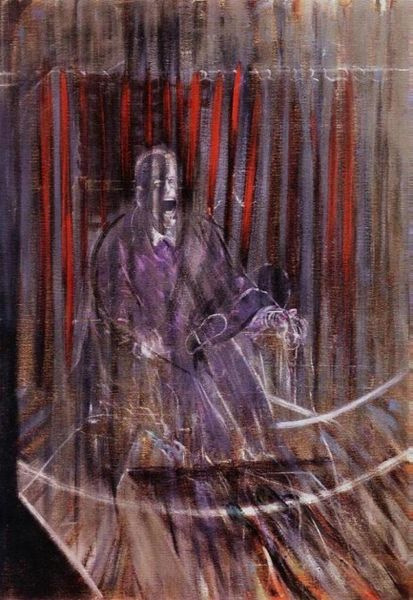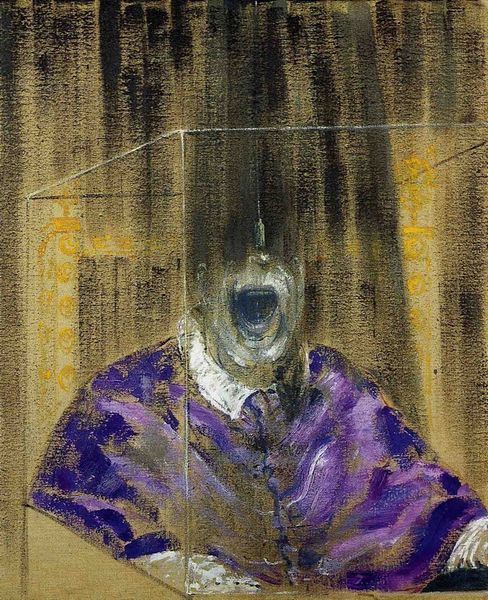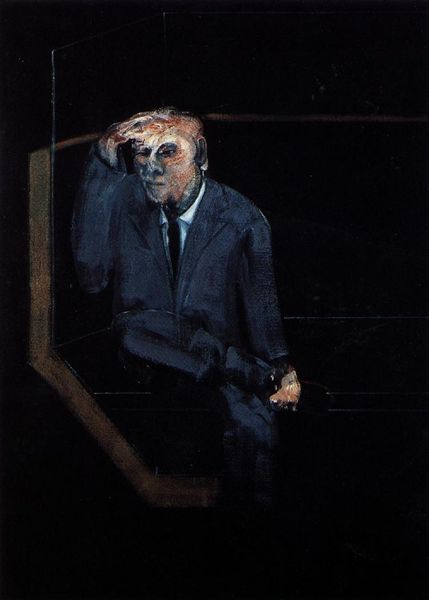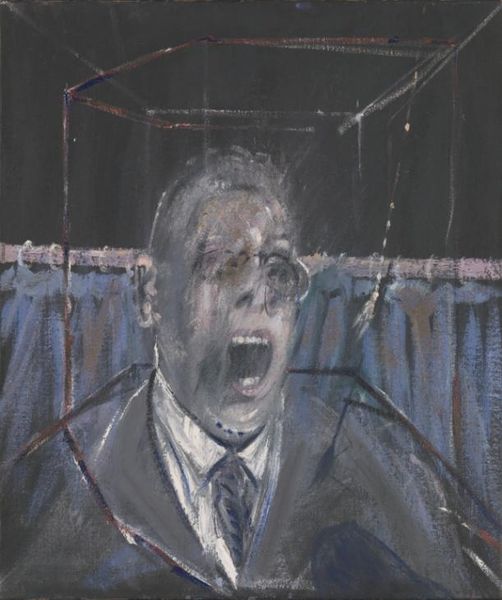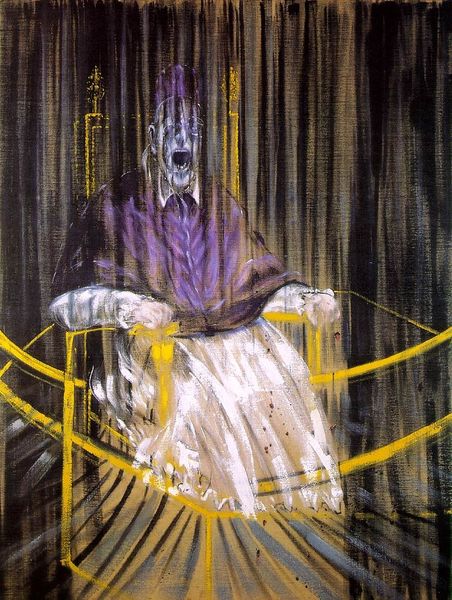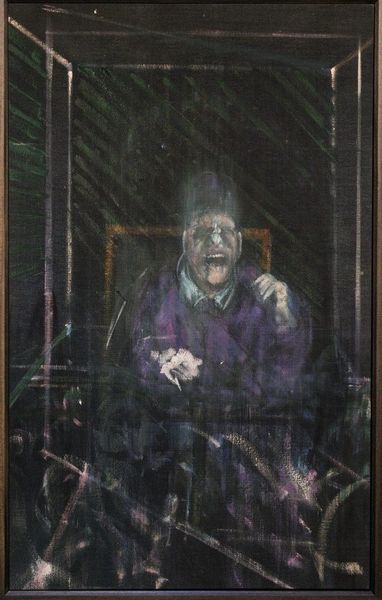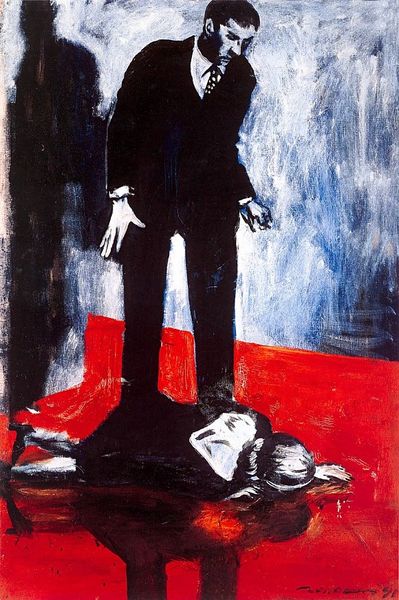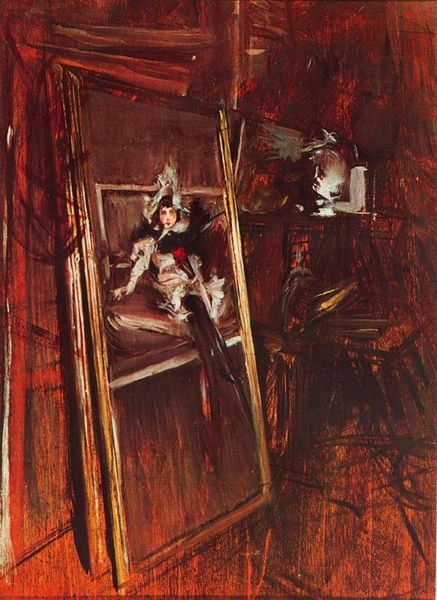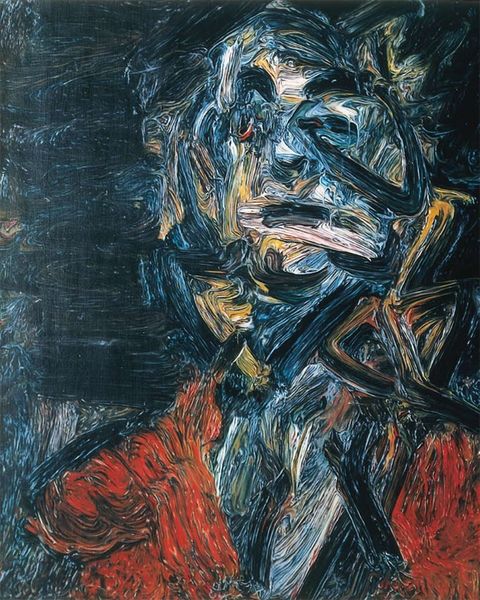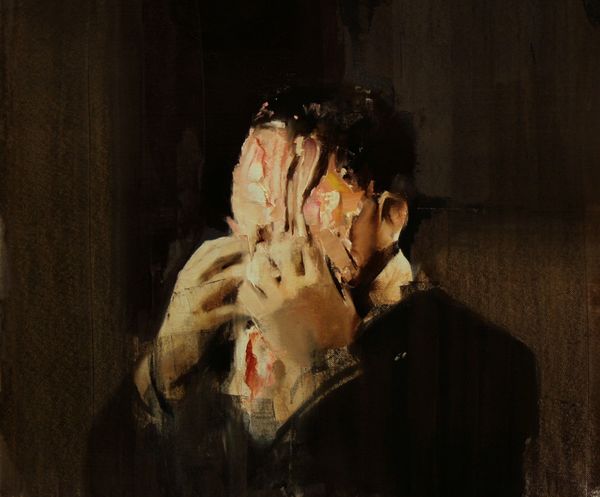
oil-paint
#
portrait
#
abstract-expressionism
#
abstract expressionism
#
oil-paint
#
figuration
#
oil painting
#
neo expressionist
#
neo-expressionism
#
modernism
Dimensions: 147.3 x 130.8 cm
Copyright: Francis Bacon,Fair Use
Editor: Francis Bacon's "Study for Portrait," painted in 1949 using oil paint, feels intensely claustrophobic. The figure seems trapped, the screaming mouth a visceral expression of some unseen horror. What's your take on this painting? Curator: I see a potent commentary on the alienation and existential angst of the post-war era. Bacon, deeply affected by the atrocities of the Second World War, uses the distorted figure to reflect a world stripped of its certainties. This isn't just a portrait; it's an interrogation of the human condition under extreme pressure. How do you see the historical context influencing the artwork? Editor: I hadn't thought about the war so directly, but it makes sense. The screaming mouth, the fractured space... it's all so raw. Is Bacon suggesting a universal feeling of helplessness? Curator: Perhaps. He's certainly challenging the traditional portrait, which historically served to affirm power and status. Here, we have a figure seemingly caged, the scream less a sound of individual pain and more an indictment of the structures that confine us. Do you think Bacon is specifically critiquing particular social or political structures? Editor: That's a good question. It's so abstract, but the suit the figure wears... maybe it represents the stifling conformity of mid-20th century society? Curator: Precisely. It’s possible to see it as a broader critique of institutions that demand conformity. It invites us to consider how societal expectations can create a sense of internal struggle. Considering what you are learning about art and society, how do you see this fitting into the rest of your studies? Editor: I think it gives me another lens through which to analyze power structures. It pushes me to look beyond the surface and consider the underlying anxieties shaping artistic expression. I hadn't realized how deeply historical events could influence the artist's portrayal. Curator: Indeed, understanding the social context provides valuable insight into the power and possibilities of visual arts as commentary and catalyst.
Comments
No comments
Be the first to comment and join the conversation on the ultimate creative platform.
